By Kristen Fescoe
Posted January, 2016
Throughout history, researchers have pushed the boundaries of science to study the human condition by conducting bizarre experiments. Over the past 100 years there have been a large number of university experiments that have stunned society. Many were conducted by well-meaning scientists with a desire to answer lingering questions about humankind. However, many went astray when regard for human or animal life was cast aside in the name of science. In some of these studies, little attention was paid to the aftermath of what the study might find. In some cases the outcomes were dangerous, even deadly. The list of poorly designed, potentially dangerous or unethical experiments is lengthy, but the studies included in this list are among the worst.
20 Most Bizarre University Experiments of All Time
Asch Conformity Study
 Study Conducted By Dr. Solomon Asch
Study Conducted By Dr. Solomon Asch
Study Conducted in 1951 at Swarthore College
Experiment Details: A 1951 study proved to be a bizarre psychology experiment with stunning results. Dr. Solomon Asch conducted a groundbreaking study. It was designed to evaluate people’s likelihood to conform to a standard when there is pressure to do so. A group of participants were shown pictures with lines of various lengths and were then asked a simple question: Which line is longest?
The tricky part of this study was that in each group only one person was a true participant. The others were actors with a script. Most of the actors were instructed to give the wrong answer. Strangely, the one true participant almost always agreed with the majority, even though they knew they were giving the wrong answer. This showed that people often care more about being the same as others than they do about being right. This study is a famous example of the temptation many of us experience to conform to a standard during group situations. The results of this study are important when we study social interactions among individuals in groups.
For more information click here
Bobo Doll Experiment
 Study Conducted By Alburt Bandura
Study Conducted By Alburt Bandura
Study Conducted from 1961-1963 at Stanford University
Experiment Details: During the early 1960s a great debate began regarding the ways in which these three things shaped children’s development:
- genetics
- environmental factors
- social learning
This debate still lingers and is commonly referred to as the Nature vs. Nurture Debate. Albert Bandura conducted the Bobo Doll Experiment to prove that human behavior is largely based upon social imitation rather than inherited genetic factors. In his groundbreaking study he separated participants into three groups:
- one was exposed to adults showing aggressive behavior towards a Bobo doll
- another was exposed to a passive adult playing with the Bobo doll
- the third formed a control group
Children watched their assigned video and then were sent to a room with the same doll they had seen in the video (except those in the control group). What the researcher found was that children exposed to the aggressive model were more likely to exhibit aggressive behavior towards the doll themselves. The other groups showed little imitative aggressive behavior.
For those children exposed to the aggressive model, the number of derivative physical aggressions shown by the boys was 38.2 and 12.7 for the girls. The results concerning gender differences strongly supported Bandura’s secondary prediction that children will be more strongly influenced by same-sex models.
The study also showed that boys exhibited more aggression when exposed to aggressive male models than boys exposed to aggressive female models. When exposed to aggressive male models, the number of aggressive instances exhibited by boys averaged 104. This was compared to 48.4 aggressive instances exhibited by boys who were exposed to aggressive female models.
While the results for the girls show similar findings, the results were less drastic. When exposed to aggressive female models, the number of aggressive instances exhibited by girls averaged 57.7. This was compared to 36.3 aggressive instances exhibited by girls who were exposed to aggressive male models.
For more information click here
Cat’s Eyes Experiment
 Study Conducted By Dr. Yang Dan
Study Conducted By Dr. Yang Dan
Study Conducted in 1999 at the University of California in Berkeley
Experiment Details: In 1999 a team of researchers at the University of California, Berkeley, conducted one of the most bizarre experiments involving animal subjects. It was led by Dr. Yang Dan, an assistant professor of neurobiology at the University of California, Berkeley. The researchers anesthetized a cat, chemically paralyzed it with Norcuron, and secured it tightly in a surgical frame. They glued metal posts to the whites of the cat’s eyes, and forced it to watch a screen with predetermined scenes.
The researchers had actually implanted fiber electrodes into the vision-processing center of the cat’s brain. The electrodes measured the electrical activity of the brain cells and transferred this information to a computer that decoded the information and transformed it into a visual image. The study was an attempt to tap into another creature’s brain and see directly through its eyes. As the cat viewed the images of the scenes of trees and a man wearing a turtleneck, the same images emerged (slightly more blurry) on the computer screen across the room.
For more information click here
Landis’ Facial Expression Experiment
 Study Conducted By Carney Landis
Study Conducted By Carney Landis
Study Conducted in 1924 at the University of Minnesota
Experiment Details: At first glance, this experiment does not seem to belong on this list of bizarre experiments. In 1924, Carney Landis was a psychology graduate student at the University of Minnesota. He was designing an experiment to establish whether different emotions create facial expressions specific to that emotion. The goal of the study was to see if all people have a common expression when feeling disgust, shock and joy.
Participants were taken to a lab.Their faces were painted with black lines to study the movements of their facial muscles. They were then exposed to a variety of stimuli designed to create a strong reaction. As each person reacted, Landis photographed their expressions. The subjects were made to:
- smell ammonia
- look at pornography
- put their hands into a bucket of frogs
The final step is what earned this study a spot on the list of bizarre science experiments. Participants were shown a live rat and instructed to behead it. While all participants were disgusted by the idea, two thirds did as told. The situation was made worse by the fact that most of the students had no idea how to perform this operation in a humane manner and the animals were forced to experience great suffering.
For the remaining third who refused to perform the decapitation, Landis would pick up the knife and cut the animals head off for them. The consequences of the study were more important in proving that people are willing to do almost anything when asked in a situation like this. The study did not prove that humans have a common set of unique facial expressions.
For more information click here
Learned Helplessness Study
 Study Conducted By Martin Seligman and S.F. Maier
Study Conducted By Martin Seligman and S.F. Maier
Study Conducted in 1967 at the University of Pennsylvania
Experiment Details: Seligman and Maier conducted a bizarre science experiment that had drastic, unexpected findings. In their study they were investigating conditioning in dogs using mild electric shocks. There were three groups of dogs that were fastened by harnesses.
Dogs in Group One were released after a short amount of time with no shock administered, making this the control group. Dogs in Group Two were paired up and leashed together, while one from each pair of dogs were given electric shocks, which could be prevented by pressing a lever. Group Three dogs were also paired up and leashed together, one of whom received shocks, but these shocks never ended, even when the lever was pressed.
The shocks came randomly and were ‘inevitable,’ which gave the dogs the concept of ‘learned helplessness,’ where they assumed that nothing could be done about the shocks. Group Three dogs had symptoms of clinical depression at the end. The unexpected part of the study came towards the end For additional testing, Group Three dogs were placed in a box by themselves. These animals were shocked but could avoid it by jumping out of the box. They simply gave up, having displayed the concept of learned helplessness. This led to a whole new theory in the psychological community.
For more information click here
Little Albert Experiment
 Study Conducted By John Watson and Rosalie Raynor
Study Conducted By John Watson and Rosalie Raynor
Study Conducted in 1920 at Johns Hopkins University
Experiment Details: One of the most widely cited bizarre human experiments is the “Little Albert” Experiment. This was a psychological experiment conducted by behaviorist John B. Watson and graduate student Rosalie Raynor. The study was in reaction to the findings of Russian physiologist Ivan Pavlov. He had conducted experiments demonstrating the conditioning process in dogs. Watson wanted to take Pavlov’s research a step further and show that emotional reactions could also be classically conditioned in humans.
Watson and Rayner exposed a nine-month-old child, known as Little Albert, to a series of stimuli including:
- a white rat
- a rabbit
- a monkey
- masks
- burning newspapers
They observed the boy’s reactions. The boy initially showed no fear of any of the objects he was shown. The next time Albert was exposed to the rat, Watson made a loud noise by hitting a metal pipe with a hammer. The child became visually upset after hearing the loud noise. After repeatedly pairing the white rat with the loud noise, Albert began to cry simply after seeing the rat.
This same reaction was seen in similar items such as a white rabbit and a Santa beard. By pairing the two stimuli, the researchers proved that they could condition an emotional response into a human. Many critics have cited the study as cruel and unethical.
For more information click here
Loftus’ “Lost in The Mall” Study
 Study Conducted By Elizabeth Loftus, James Coan and Jacqueline Pickrell
Study Conducted By Elizabeth Loftus, James Coan and Jacqueline Pickrell
Study Conducted in 1995 at the University of Washington
Experiment Details: In 1995 and 1996, Elizabeth Loftus, James Coan and Jacqueline Pickrell designed a bizarre experiment. They wanted to prove how simple it was to implant a fictitious memory of having been lost in a shopping mall as a child. The false childhood event is described to the participant coupled with true events. Over the course of a few interviews this false information becomes incorporated into the person’s true memories, so that they believe the experience truly occurred.
The findings of this study became widely controversial as they demonstrated how unreliable and suggestible memory can be. This created doubt in a number of areas, including so-called “recovered memories” of abuse that originated during sessions of psychotherapy as well as witness testimony. This highly sensitive area is still debated by experts as to the nature of false memories, repression and recovered memories.
For more information click here
Monkey Drug Trials
 Study Conducted By Gerrald Deneau, Tomoji Yanagita and M.H. Seevers
Study Conducted By Gerrald Deneau, Tomoji Yanagita and M.H. Seevers
Study Conducted in 1969 at the University of Michigan
Experiment Details: Another bizarre university experiment occurred in 1969 at the University of Michigan. In this study Gerrald Deneau, Tomoji Yanagita, and M.H. Seevers set forth to study psychological dependence among drug users. The research was conducted at the Department of Pharmacology at the University of Michigan Medical School.
In the study the three researchers used macaque monkeys. Illicit drugs administered into their systems, making them dependent on these substances. The animals were injected with various drugs, including:
- cocaine
- amphetamines
- morphine
- alcohol
The researchers were looking to study whether or not the animals would self-administer the psychoactive and potentially deadly substances. Many of the monkeys did self-administer. Through these findings the researchers asserted that this established a link between drug abuse and psychological dependence. Another interesting element of this experiment was that the monkeys became addicted to certain substances, but not others. The study has been looked on as potentially cruel and unethical because the animals were harmed during the course of the study.
For more information click here
“Pig Powder” Experiment
 Study Conducted By Alan Spievak
Study Conducted By Alan Spievak
Study Conducted in 2008 at the University of Pittsburgh
Experiment Details: A more recent bizarre science experiment began in 2005. Lee Spievack sliced off the tip of his finger in the propeller of a hobby shop airplane. What happened three years later pushed him into the forefront of medical science. Spievack’s brother, Alan Spievack, a medical research scientist, sent him a special powder and told him to sprinkle it on the wound. Dr. Alan Spievack was a researcher at the University of Pittsburgh’s McGowan Institute of Regenerative Medicine. They had been working on a regenerative powder where cells are scraped from the lining of a pig’s bladder. The tissue is decellulised, and then dried. This “magic powder” helped to regrow the tip of the severed finger.
For more information click here
Pit of Despair Experiment
 Study Conducted By Harry Harlow
Study Conducted By Harry Harlow
Study Conducted in 1972 at the University of Wisconsin in Madison
Experiment Details: The pit of despair was a device created by psychologist Harry Harlow, which was technically called a vertical chamber apparatus. This device was used in an experiment using rhesus macaque monkeys at the University of Wisconsin–Madison. The goal of the research was to produce an animal model of clinical depression.
In the experiment the animals were placed in a chamber with a 3/8-inch wire mesh floor 1 inch above the bottom of the chamber. This allowed waste material to drop through the drain and out of holes drilled in the stainless-steel. The chamber was equipped with a food box and a water-bottle holder. It was covered with a pyramid top, designed to discourage the monkeys from hanging from the upper part of the chamber.
The monkeys were between the ages of three months and three years old, after they had bonded with their mothers. He placed them in the chamber for up to 10 weeks. Within just a few days, the young monkeys had stopped moving about and remained huddled in a corner. In some cases they even became psychotic, and most could not be treated.
This bizarre college experiment has been noted by many to be extremely cruel and unethical.
For more information click here
Rat Music Preference Study
 Study Conducted By J.E. Polston and S.D. Glick
Study Conducted By J.E. Polston and S.D. Glick
Study Conducted in 2011 at the Albany Medical College
Experiment Details: Another bizarre college experiment came out of the Albany Medical College in 2011. Researchers J.E. Polston and S.D. Glock set out to determine the music preferences of rats before and after having cocaine put into their system. After administering the drug, the rats could use a set of buttons to change playing music.
Researchers found that before the drug was administered the rats had a strong preference for silence. When silence was not an option they preferred Beethoven’s “Fur Elise” over Miles Davis’s iconic jazz tune “Four.”
After rats were given the drug they showed a strong preference for the Jazz music. This study has been strongly criticized for a number of reasons. The most cited reason is that the study was done with some taxpayers’ dollars. What is probably the largest criticism is that the study had little to no impact on the world of psychology, music or drug addiction science.
For more information click here
Schizophrenia Study
 Study Conducted By Keith Nuechterlein and Michael Gitlin
Study Conducted By Keith Nuechterlein and Michael Gitlin
Study Conducted in 1983 at the University of California in Los Angeles
Experiment Details: A frighteningly bizarre science experiment was conducted in 1983 by Keith Nuechterlein and Michael Gitlin, called “Development Process in Schizophrenia.” The University of California study required medically treated schizophrenics to stop taking their medications in order to study the outcomes.
The goal of the study was to allow doctors to better learn how to treat schizophrenia. The participants were taken off their medicine and then released back into their lives with some monitoring. At some points throughout the study, participants did not receive regular visits with a doctor. Ultimately, one participant, Tony LaMadrid, killed himself during a period of the study.
Not much was learned from this highly criticized experiment, because it was largely considered a failure. Ninety percent of the participants relapsed into episodes of mental illnesses, effectively proving nothing other than that stopping schizophrenia medication will result in full relapse. The experiment is considered highly unethical for a number of reasons These included the fact that participants who joined later in the study were not told that 90 percent of participants relapsed.
Another major criticism is that releasing the participants into an uncontrolled environment without regular visits or monitoring was an unnecessary risk taken by the University.
For more information click here
Stanley Milgram Experiment
 Study Conducted By Stanley Milgram
Study Conducted By Stanley Milgram
Study Conducted in 1961 at Yale University
Experiment Details: The 1961 study was designed to measure the willingness to obey authority figures by instructing people to perform acts that conflicted with their morals. It was conducted by Yale University psychologist Stanley Milgram.
The study was based on the premise that humans will inherently take direction from authority figures from very early in life. Participants were told they were participating in a study on memory. They were asked to watch another person (an actor) do a memory test. They were instructed to press a button that gave an electric shock each time the person got a wrong answer. The actor did not actually receive the shocks but pretended they did.
Participants were told to play the role of “teacher” and administer electric shocks to “the learner,” who was supposedly in a different room, every time they answered a question incorrectly. The experimenters asked the participants to keep increasing the shocks. Most of them obeyed even though the individual doing the memory test appeared to be in great pain. Despite these protests, many participants continued the experiment when the authority figure urged them to. They increased the voltage after each wrong answer until some eventually administered what would be lethal electric shocks.
This experiment showed that humans are conditioned to obey authority and will usually do so even if it goes against their morals or common sense.
For more information click here
Stanford Prison Study
 Study Conducted By Philip Zimbardo
Study Conducted By Philip Zimbardo
Study Conducted in 1971 at Stanford University
Experiment Details: One of the most well-known bizarre university experiments occurred when a psychology professor wanted to study the assumption of roles. The Stanford Prison Experiment was designed by Philip Zimbardo. It studied behavior of “normal” individuals when assigned a role of prisoner or guard.
College students were recruited and paid a small amount for their participation. The students were assigned roles of “guard” or “inmate.” Zimbardo played the role of the warden. The prison guards were told to run a prison for two weeks. They were told not to physically harm any of the inmates during the study. After a few days, the prison guards became very abusive verbally towards the inmates. Many of the prisoners became submissive to those in authority roles. The experiment inevitably had to be cancelled because some of the participants displayed troubling signs of breaking down mentally.
The experiment was conducted very unethically. However, many psychologists believe that the findings showed how much human behavior is related to the situation they are in and that people will conform to certain roles if the conditions are right.
For more information click here
Stimocever
 Study Conducted By Jose Delgado
Study Conducted By Jose Delgado
Study Conducted in 1963 at Yale University
Experiment Details: In 1963, Dr. Jose Delgado entered a bullring in Cordova, Spain, with a 550-lb. charging bull named Lucero. The Yale University neurophysiologist was implementing a plan to control the bull’s mind with a device he had been studying for years.
The Yale professor had invented the Stimocever, a radio implanted in the brain to control behavior. The chip, which was about the size of a quarter, could be medically inserted into a patient’s head and operated via remote control. Delgado intended the technology to help in the creation of a “psychocivilized society.” All people could temper their self-destructive tendencies by pushing a button. There were some negative consequences, including a woman who lost some motor functions after using the stimulator. This bizarre science experiment is said to have many potential benefits, but many critics of the study denounce it as a form of mind control.
For more information click here
Superstitious Pigeons
 Study Conducted By B. F. Skinner
Study Conducted By B. F. Skinner
Study Conducted in 1947 at Indiana University
Experiment Details: Among the most bizarre college experiments was the 1947 study conducted by renowned psychiatrist B. F. Skinner. The study showed that even pigeons are susceptible to the human condition of superstition. The experiment studied a group of hungry pigeons whose body weights had been reduced to 75 percent of their normal weight when well-fed.
For a few minutes each day, a mechanism fed the birds at regular intervals. The researchers found was that the birds developed superstitious behavior, believing that by acting in a particular way, or committing a certain action, food would arrive. By the conclusion of the study, three quarters of the birds had become superstitious.
One pigeon, in pursuit of food, believed that turning around in the cage twice or three times in a counter-clockwise direction would result in a feeding.
For more information click here
The Lazarus Project
 Study Conducted By Robert Cornish
Study Conducted By Robert Cornish
Study Conducted in the 1930s at the University of California at Los Angeles
Experiment Details: In the 1930s, University of California researcher Robert Cornish set out to prove that he could revive dead animals as long as they had not suffered major organ damage. In this bizarre science experiment, he asphyxiated four fox terriers, all of which he named “Lazarus” The Lazarus named was in reference to the biblical character whom Jesus brought back to life.
Cornish placed the terriers in a seesaw-like machine. The machine circulated the animal’s blood-flow by moving up and down while Cornish administered a cocktail of adrenaline and anticoagulants. He was unsuccessful in reviving the first two subjects but succeeded with the last two. Although blinded and severely brain-damaged, Lazarus 3 and Lazarus 4 lived for months.
The researcher became so infamous that the University asked him to leave. He had to continue his work in a makeshift lab near his home. In 1947, the experimenter reappeared with a new resurrection machine and was in search of a human volunteer. A prisoner on death row, Thomas McMonigle, volunteered for the project. However, state officials were afraid that they might have to free him after the execution and declined Cornish’s request.
For more information click here
The Monster Study
 Study Conducted By Wendell Johnson and Mary Tudor
Study Conducted By Wendell Johnson and Mary Tudor
Study Conducted in 1939 at the University of Iowa
Experiment Details: In 1939, University of Iowa researchers Wendell Johnson and Mary Tudor designed and implemented a bizarre human experiment to investigate stuttering in children. The experiment sought to outline the effects of positive and negative speech therapy on children.
The researchers gathered a group of 22 orphans in Davenport, Iowa. The children were randomly assigned to two groups.
The first group received positive speech therapy where they were praised for their speech fluency. In the second group, the children were given negative speech therapy. They were belittled for each speech imperfection. Normal-speaking children in the second group developed speech problems, which they had for the rest of their lives.
As a result of the experiment, some of the children who received negative speech therapy suffered psychological effects. They had speech problems for the rest of their lives, making them examples of the significance of positive reinforcement in education. Terrified by the news of human experiments conducted by the Nazis, Johnson and Tudor never published the results of their “Monster Study.”
For more information click here
Turkey Attraction Study
 Study Conducted By Martin Schein and Edgar Hale
Study Conducted By Martin Schein and Edgar Hale
Study Conducted in 1965 at Pennsylvania State University
Experiment Details: Turkeys were the subject of yet another bizarre university experiment. In this 1965 study, researchers set out to study the attraction and discrimination of turkeys in mating habits. Researchers at the University of Pennsylvania became curious about exactly how bad a decoy turkey hen could be before males rejected it.
They desiged a series of experiments where they removed the legs, tail, wings, and even the body of a decoy and recorded the male turkey’s response. Researchers Martin Schein and Edgar Hale started the experiment by presenting male turkeys with a model of a female turkey. The researchers kept removing sections of the turkey until all they were left with was the head of the model. They found that the turkey did not discriminate the decoy as being a non-suitable mate even when the decoy was nothing more than a balsa-wood head on a stick.
For more information click here
“Would You Go To Bed With Me Tonight?” Experiment
 Study Conducted By Russell Clark
Study Conducted By Russell Clark
Study Conducted in 1978 at Florida State University
Experiment Details: In 1978 at Florida State University a researcher set out to conduct a simple study of the different sexual attitudes between men and women. Dr. Russell Clark used his social psychology students to be the actors in the study.
In this bizarre college experiment, the students would wait on campus until a student of the opposite sex walked by. At this point they would confront the student with ploys such as “I have been noticing you around campus. I find you to be attractive. Would you go to bed with me tonight?”
What Clark and his students found was that 75 percent of males were happy to indulge an attractive female stranger. Those who said no typically offered the excuse, “I’m married”. However, not one female student accepted the identical offer of an attractive male.
In most cases, the female students demanded the male actor “leave her alone.” The goal of the study was to find out which gender, in a real-life situation, would be more receptive to a sexual offer from a stranger. The psychological community initially dismissed the findings of the study. But over time his experiment gained first acceptance, and then commendation for how it revealed the differing sexual attitudes of men and women.
For more information click here
20 Most Bizarre University Experiments of All Time
Among these experiments and studies, we see boundaries pushed and theories taking on a life of their own. It is through the endless stream of scientific experiments that we can see simple hypotheses become guiding theories for those in this field. It is through research that scientists can answer questions and better understand human and animal behavior and thoughts.
When scientific experiments are conducted in a safe, humane, and ethical manner, the findings are beneficial and no one harmed. However, when precautions are not taken to safeguard participants, the consequences can be quite harmful. It is by studying the research of the past that we can better understand how to design and conduct a safe and ethical research study that protects those who choose to participate.
About the Author
After earning a Bachelor of Arts in Psychology from Rutgers University and then a Master of Science in Clinical and Forensic Psychology from Drexel University, Kristen Fescoe began a career as a therapist at two prisons in Philadelphia. At the same time, she volunteered as a rape crisis counselor, also in Philadelphia. After a few years in the field, she accepted a teaching position at a local college, where she currently teaches online psychology courses. Kristen began writing in college and still enjoys her work as a writer, editor, professor and mother.
This concludes our list of the 20 Most Bizarre University Experiments of All Time.
 Study Conducted By Dr. Solomon Asch
Study Conducted By Dr. Solomon Asch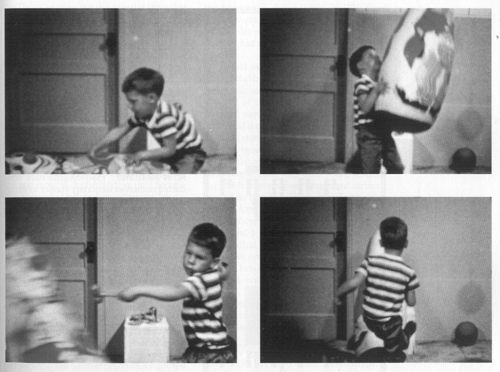 Study Conducted By Alburt Bandura
Study Conducted By Alburt Bandura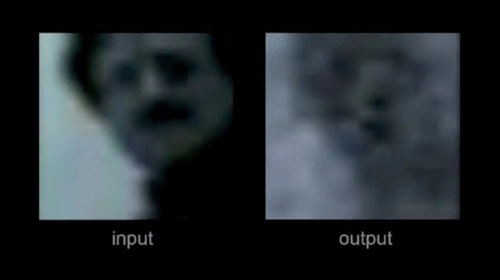 Study Conducted By Dr. Yang Dan
Study Conducted By Dr. Yang Dan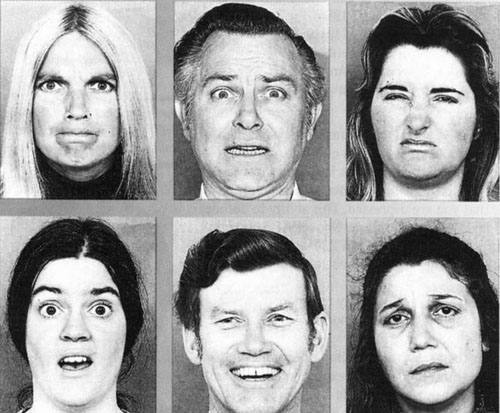 Study Conducted By Carney Landis
Study Conducted By Carney Landis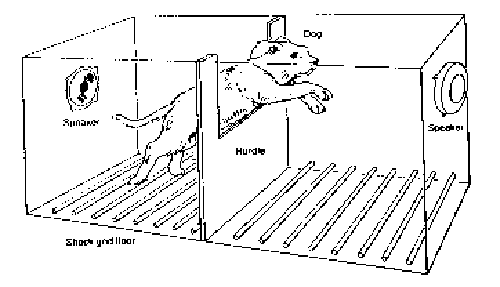 Study Conducted By Martin Seligman and S.F. Maier
Study Conducted By Martin Seligman and S.F. Maier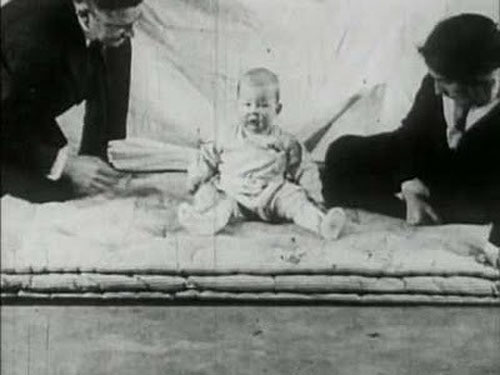 Study Conducted By John Watson and Rosalie Raynor
Study Conducted By John Watson and Rosalie Raynor Study Conducted By Elizabeth Loftus, James Coan and Jacqueline Pickrell
Study Conducted By Elizabeth Loftus, James Coan and Jacqueline Pickrell Study Conducted By Gerrald Deneau, Tomoji Yanagita and M.H. Seevers
Study Conducted By Gerrald Deneau, Tomoji Yanagita and M.H. Seevers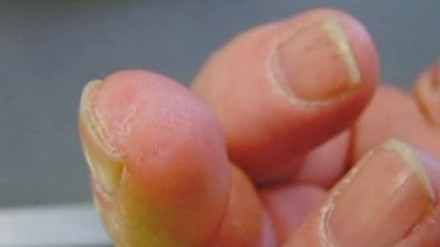 Study Conducted By Alan Spievak
Study Conducted By Alan Spievak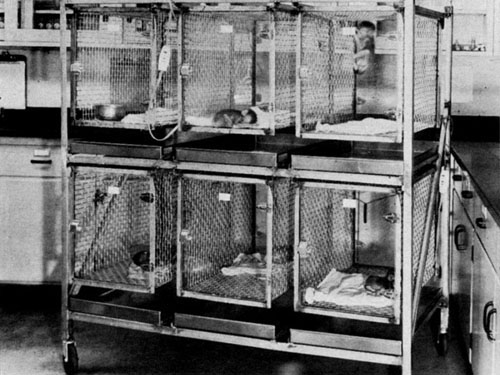 Study Conducted By Harry Harlow
Study Conducted By Harry Harlow Study Conducted By J.E. Polston and S.D. Glick
Study Conducted By J.E. Polston and S.D. Glick Study Conducted By Keith Nuechterlein and Michael Gitlin
Study Conducted By Keith Nuechterlein and Michael Gitlin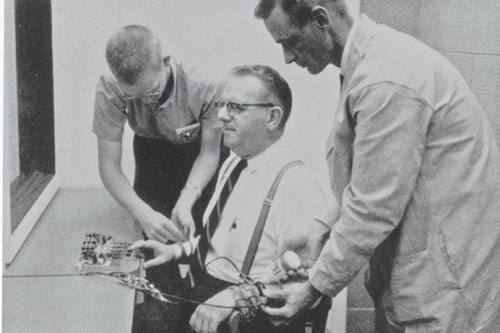 Study Conducted By Stanley Milgram
Study Conducted By Stanley Milgram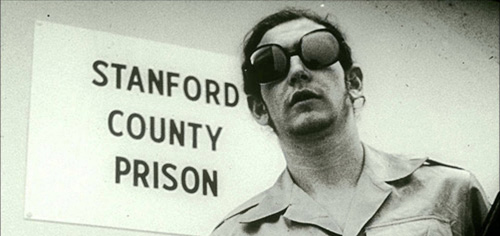 Study Conducted By Philip Zimbardo
Study Conducted By Philip Zimbardo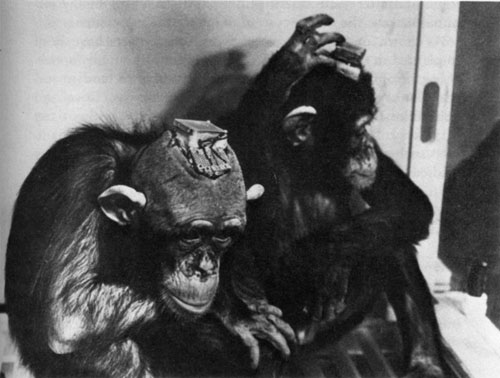 Study Conducted By Jose Delgado
Study Conducted By Jose Delgado Study Conducted By B. F. Skinner
Study Conducted By B. F. Skinner Study Conducted By Robert Cornish
Study Conducted By Robert Cornish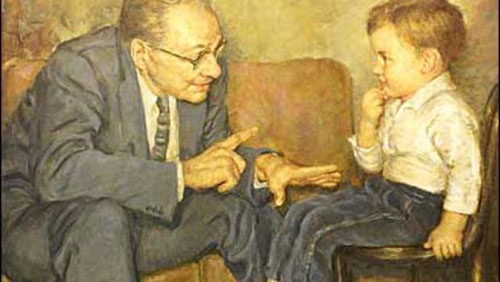 Study Conducted By Wendell Johnson and Mary Tudor
Study Conducted By Wendell Johnson and Mary Tudor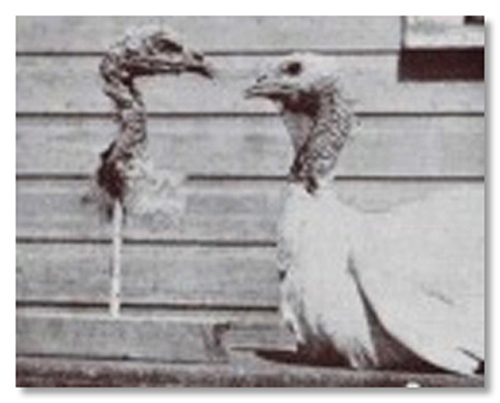 Study Conducted By Martin Schein and Edgar Hale
Study Conducted By Martin Schein and Edgar Hale Study Conducted By Russell Clark
Study Conducted By Russell Clark